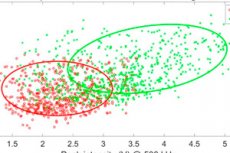New publications
A portable device to detect bacteria already exists
Last reviewed: 02.07.2025

All iLive content is medically reviewed or fact checked to ensure as much factual accuracy as possible.
We have strict sourcing guidelines and only link to reputable media sites, academic research institutions and, whenever possible, medically peer reviewed studies. Note that the numbers in parentheses ([1], [2], etc.) are clickable links to these studies.
If you feel that any of our content is inaccurate, out-of-date, or otherwise questionable, please select it and press Ctrl + Enter.

Rutgers University staff have developed a unique portable device that allows them to detect and identify various types of bacteria, determine their sensitivity to antibiotics, and even analyze the composition of algae living on coral reefs. The scientists reported on their invention in the scientific publication Scientific Reports.
“Our goal was to develop a new method for determining the state of cellular structures. This method should not involve the use of expensive and hard-to-find genomic devices,” says Debashish Bhattacharya, one of the project leaders and a doctor of biochemistry and microbiology in the College of Environmental and Biological Sciences at Rutgers University. “The new technology allows us to quickly draw conclusions about the state of living structures without sending them to the lab, which helps to urgently index the stress level of representatives of different ecological systems.”
At the very beginning of the project, work on this technology began with the aim of assessing the pollution and the degree of influence of the water temperature on various microorganisms and, in particular, on unicellular algae. In this aspect, the device made it possible to quickly determine whether the cellular structure is in a stressful state and what is wrong with it. The essence lies in the sequential passage of microorganisms through a microscopic channel, the lumen of which is diametrically smaller than a human hair. During this passage, the complex electrical resistance indicator that is formed in the device is measured. The resulting value reflects the size and physical status of the microorganisms - that is, factors reflecting the level of cell stress.
Scientists have demonstrated that electrical resistance measurements can be applied to both a single cell and an entire population. The researchers propose using the device to determine antibiotic resistance in various microbes and algae living on coral reefs. This will allow monitoring the state of calcareous organogenic geological structures.
Coral reefs are among the most densely populated ecosystems in the World Ocean. The total number of biological species living on them reaches 1 million, and sometimes exceeds this figure, which is due to the presence of single-celled algae (symbionts), whose photosynthetic activity does not stop and continues all year round. Today, the state of this ecological system makes scientists worry: huge scientific resources are used to study and monitor coral reefs.
As for the new scientific development, scientists are not yet making any predictions regarding the use of the portable device for other purposes – in particular, medical ones.
You can learn more about the new development from the article www.nature.com/articles/s41598-020-57541-6
